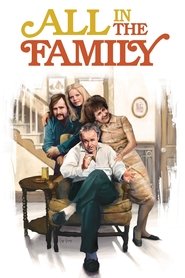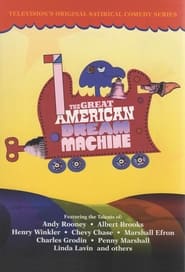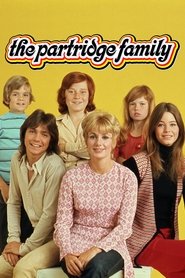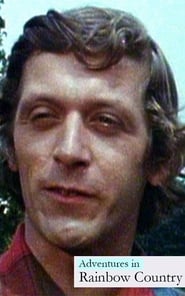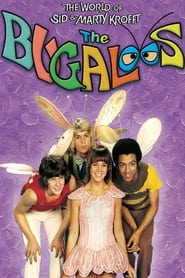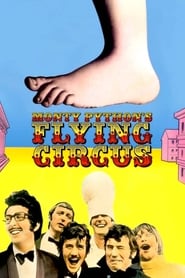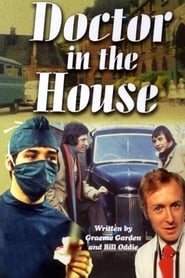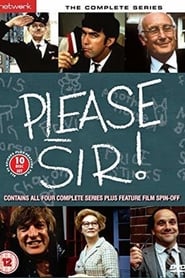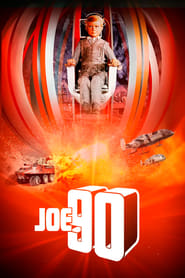New Action Adventure TV Series on Tubi TV - Page 272
-
All in the Family
1971
All in the Family
1971
star 7.8Archie Bunker, a working class bigot, constantly squabbles with his family over the important issues of the day. -
The Great American Dream Machine
1971
The Great American Dream Machine was a weekly satirical variety television series, produced in New York City by WNET and broadcast on PBS from 1971 to 1973. The program was hosted by humorist and commentator Marshall Efron. The show centered around skits and satirical political commentary. The hour and a half long show usually contained at least seven different current event topics. In the second season, the show was trimmed down to an hour. Other notable cast members included Chevy Chase. Contributors included Albert Brooks and Andy Rooney. Some of the skits would later be revamped for the movie The Groove Tube. There were also occasional short films presented on the show, most of them "experimental" or documentaries about artistic endeavours. Some of these were subtitled. -
The Partridge Family
1970
The Partridge Family
1970
star 6.7The Partridge Family is an American television sitcom series about a widowed mother and her five children who embark on a music career. -
Make Room for Granddaddy
1970
star 5Make Room for Granddaddy is a sequel to the American TV series The Danny Thomas Show (also known as Make Room for Daddy). The series aired for one season on ABC between September 1970 and March 1971. -
Adventures in Rainbow Country
1970
star 5.5"Adventures in Rainbow Country," aired on CBC Television from 1970 to 1971 and later ran on Nickelodeon in the early '80s. Led by Lois Maxwell as Nancy Williams, a widow caring for her children in rural Northern Ontario, the series revolved around family dynamics and featured characters like Billy, his Ojibwa friend Pete Gawa, and bush pilot Dennis McGubgub. Filming took place around Whitefish Falls, near Espanola, and scenes were shot in Birch Island and Manitoulin Island in 1969. With 26 episodes, it had successful reruns in Canada and internationally, appearing on channels like DejaView and Silver Screen Classics. Although never officially cancelled, the series didn't produce more episodes after its initial run. -
The Best of Flip Wilson
1970
The best of the Flip Wilson variety show, a mix of skits, musical acts and famous guests. -
The Bugaloos
1970
The Bugaloos
1970
star 6The Bugaloos was an American children's television series, produced by brothers Sidney Krofft and Martin Krofft, that aired on NBC on Saturday mornings from 1970 to 1972. The show featured a musical group composed of four British-accented teenagers, who lived in fictional Tranquility Forest. They wore insect-themed outfits with antennae and wings which allowed them to fly, though on occasion, they were shown flying on surfboards. They were constantly beset by the evil machinations of Benita Bizarre, played by comedienne Martha Raye. Bizarre, being untalented and ugly herself, was covetous of the Bugaloos' musical prowess. -
A Family at War
1970
A Family at War
1970
star 7The Ashton family struggles to deal with the harsh realities of the Second World War as their sons are sent away to fight. Those who remain at home in Liverpool live in constant fear of a knock on the door with a telegram from the War Office or the Luftwaffe bombs overhead as they sleep at night. -
Monty Python's Flying Circus
1969
star 8.2A British sketch comedy series with the shows being composed of surreality, risqué or innuendo-laden humour, sight gags and observational sketches without punchlines. -
Scooby-Doo, Where Are You!
1969
star 7.8Fred, Daphne, Velma, Shaggy, and the talking dog, Scooby-Doo, travel on the Mystery Machine van, in search of weird mysteries to solve. -
H.R. Pufnstuf
1969
H.R. Pufnstuf
1969
star 7H.R. Pufnstuf is a children's television series produced by Sid and Marty Krofft in the United States. It was the first Krofft live-action, life-size puppet program. The seventeen episodes were originally broadcast from September 6, 1969 to December 27, 1969. The broadcasts were successful enough that NBC kept it on the Saturday morning schedule until August 1972. The show was shot in Paramount Studios and its opening was shot in Big Bear Lake, California. Reruns of the show aired on ABC Saturday morning from September 2, 1972 to September 8, 1973 and on Sunday mornings in some markets from September 16, 1973 to September 8, 1974. It was syndicated by itself from 1974 to 1978 and in a package with six other Kroft series under the banner Kroft Superstars from 1978 to 1985. In 2004 and 2007, H.R. Pufnstuf was ranked #22 and #27 on TV Guide's Top Cult Shows Ever. -
La Pantera Rosa
1969
-
Dombey and Son
1969
Dombey and Son
1969
Charles Dickens' classic novel is given its first television adaptation in this classic 1969 BBC production. Paul Dombey is a well-to-do shipping firm owner, who lacks a son to take over the family business. After rejecting his daughter's affection, he reconciles with her before his death. -
Doctor in the House
1969
-
Jekyll
1969
Jekyll
1969
star 4When a series of brutal attacks are committed by a lunatic named Edward Hyde, the investigation leads to molecular biologist Henry Jekyll. But have the doctor's unorthodox experiments unlocked even greater horrors? -
The Glen Campbell Goodtime Hour
1969
star 5.8The Glen Campbell Goodtime Hour is an American network television music and comedy variety show hosted by singer Glen Campbell from January 1969 through June 1972 on CBS. He was offered the show after he hosted a 1968 summer replacement for The Smothers Brothers Comedy Hour. Campbell used "Gentle on My Mind" as the theme song of the show. The show was one of the few rural-oriented shows to survive CBS's rural purge of 1971. -
Please Sir!
1968
Please Sir!
1968
star 6.8A hapless but caring teacher tries to control his class of unruly kids. The teacher sees much good and potential in his pupils, much to the dismay of his fellow teachers who have lost hope in these kids. -
Joe 90
1968
Joe 90
1968
star 7.1Joe 90 is a 1960s British science-fiction television series following the adventures of a nine-year-old child, Joe McClaine, who starts a double life as a schoolboy-turned-spy when his scientist father invents a device capable of duplicating and transferring expert knowledge and experience from one human brain to another. Equipped with the skills of the foremost academic and military minds, Joe is recruited by the World Intelligence Network and, becoming its "Most Special Agent", pursues the ideal of world peace and saving human life. -
The Doris Day Show
1968
The Doris Day Show
1968
star 5.3The Doris Day Show is an American sitcom that was originally broadcast on the CBS network from September 1968 until March 1973, remaining on the air for five seasons and 128 episodes. In addition to showcasing Doris Day, the show is remembered for its many abrupt format changes over the course of its five-year run. It is also remembered for Day's statement, in her autobiography Doris Day: Her Own Story, that her husband Martin Melcher had signed her to do the TV series without her knowledge, a fact she only discovered when Melcher died of heart disease on April 20, 1968. The TV show premiered on Tuesday, September 24, 1968.
 Netflix
Netflix
 Amazon Prime Video
Amazon Prime Video
 Apple iTunes
Apple iTunes
 Apple TV Plus
Apple TV Plus
 Disney Plus
Disney Plus
 Google Play Movies
Google Play Movies
 Paramount Plus
Paramount Plus
 Hulu
Hulu
 HBO Max
HBO Max
 YouTube
YouTube
 fuboTV
fuboTV
 Peacock
Peacock
 Peacock Premium
Peacock Premium
 Amazon Video
Amazon Video
 The Roku Channel
The Roku Channel
 AMC+
AMC+
 Kocowa
Kocowa
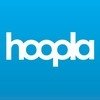 Hoopla
Hoopla
 The CW
The CW
 Vudu
Vudu
 Starz
Starz
 Showtime
Showtime
 PBS
PBS
 Pantaflix
Pantaflix
 FXNow
FXNow
 Tubi TV
Tubi TV
 Kanopy
Kanopy
 Comedy Central
Comedy Central
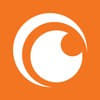 Crunchyroll
Crunchyroll
 Microsoft Store
Microsoft Store
 Redbox
Redbox
 Sun Nxt
Sun Nxt
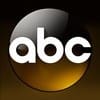 ABC
ABC
 DIRECTV
DIRECTV
 Crackle
Crackle
 Fandor
Fandor
 Plex
Plex
